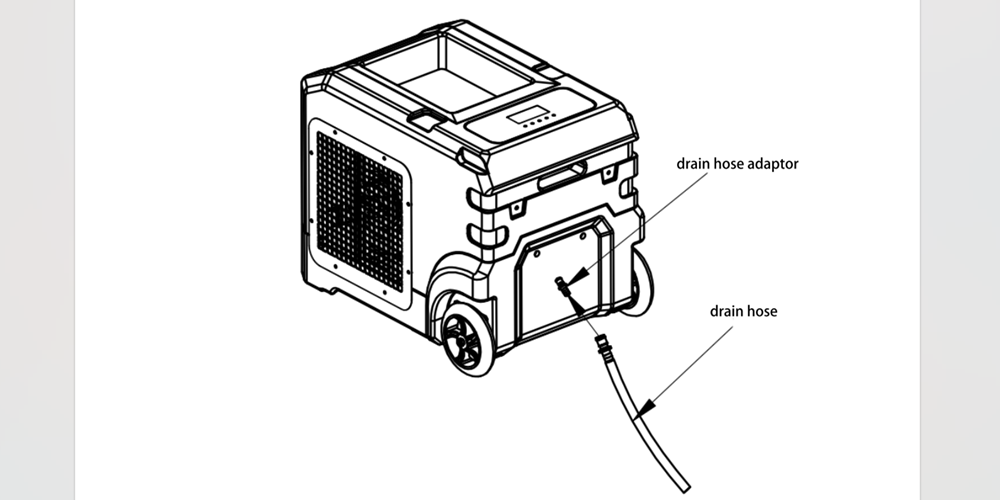Function of a Built-In Pump of a Dehumidifier
1. Automatic Water Removal:
- The primary function of a commercial dehumidifier with pump is to automatically remove the collected water from the unit. It pumps the water out through a hose to a designated drainage area.
2. Extended Drainage Options:
- With a built-in pump, the dehumidifier can discharge water to locations that are above the level of the dehumidifier, such as a sink, a window, or even out of a basement window, which is not possible with gravity-based drainage systems.
Benefits of a Built-In Pump of a dehumidifier
1. Convenience:
- Eliminates the need to manually empty the water tank, which can be especially useful in high-humidity areas where the tank fills up quickly.
- Reduces the frequency of maintenance, allowing the dehumidifier to operate continuously without interruption.
2. Flexibility in Placement:
- Allows for more flexibility in placing the dehumidifier since you are not restricted to locations near a floor drain.
- Ideal for basements, crawl spaces, or other areas where a floor drain might not be available.
3. Continuous Operation:
- Ensures that the dehumidifier can run continuously without shutting off due to a full water tank, maintaining consistent humidity levels and preventing potential water damage.
4. High Capacity Handling:
- Beneficial for large-capacity dehumidifiers that collect significant amounts of water. A large basement dehumidifier with pump can handle larger volumes of water efficiently.
How the Water Pump Works in a Dehumidifier
1. Collection:
- As the dehumidifier operates, it pulls moisture from the air and collects it in an internal reservoir or water tank.
2. Activation:
- When the water level in the tank reaches a certain point, the built-in pump activates automatically.
3. Pumping:
- The pump moves the collected water through an attached hose, which can be directed to a sink, drain, or other suitable discharge location. PREAIR, as a professional dehumidifier manufacturer, provides the best-quality basement dehumidifier with pump and drain hose for sale. Please contact us if you need efficient dehumidifiers!
4. Continuous Cycle:
- This process repeats continuously, ensuring the dehumidifier can operate without interruption as long as it is powered on and the hose remains unobstructed.

Considerations When Using a Dehumidifier with a Built-In Pump
1. Setup:
- Ensure the discharge hose is properly connected and directed to an appropriate drainage location.
- Check that the hose is not kinked or obstructed to allow for smooth water flow.
2. Maintenance:
- Regularly inspect the hose and pump for any signs of wear or blockage.
- Clean the water tank and pump components periodically to prevent mold and mildew buildup.
3. Power Supply:
- Ensure the dehumidifier is plugged into a reliable power source, as the pump requires power to operate effectively.
In summary, a built-in pump in a dehumidifier significantly enhances its convenience and flexibility by allowing automatic and efficient water removal, making it ideal for continuous use in various settings.
Post time: Jul-03-2024


